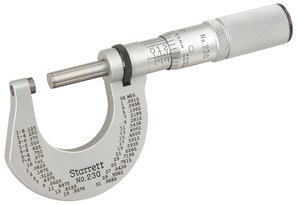|
Posted on 11/25/2012 9:50:09 AM PST by NewJerseyJoe
"On this Thanksgiving Day, let me say this: God Bless America the only country on this [bleep] planet where you still have the freedom to build AKs in defense of Motherland! The only country where a [bleep] shovel can become an awesome weapon of death and destruction."
(Excerpt) Read more at northeastshooters.com ...
He could weld a shovel blade on to a bayonet handle; cap ‘em and bury ‘em, all with the same one versitile tool.
Now go out and look for a shovel ready job with that!
In the 1880s they made a trowel bayonet for the trapdoor Springfield rifle that was supposed to work for entrenching as well as CQB. It never really caught on and they are collector’s items today.
Awesome!
Check this guy out. Glad he’s on our side.
Anyone know how to cut Rifling groves ping?
Good one!
There are three ways to cut rifling:
1. Single-point cutter. This is the oldest method, and used to be used on sine bar rifling machines. The cutter cuts the groove, about 0.0001” per pass at a time. What comes out the end of the barrel looks like dark oily dust, not metal chips. Your twist is determined by the sine bar rotating the mandrel on which the cutter is mounted. Typically, the cutter is pulled through the bore, not pushed.
The rifling groove can be made deeper on successive passes by adjusting the cutter.
2. Broach or button-cut rifling. The broach/button will cut 2 to 5 grooves at a time by being pushed through the bore. Some broaches will cut the full depth of the rifling in one pass by using successively deeper cutting teeth in the pre-determined twist rate.
3. Hammer forging of a cold barrel onto a rifled mandel - this is now used in most big-time production. The barrel’s bore is slightly oversized of what the final bore dimension is, and there’s a hardened mandrel onto which the barrel is squeezed under very high pressures in a machine that hammers the outside of the barrel inwards onto the mandrel. The steel of the barrel distorts around the rifling flights on the mandrel, and then the mandrel is withdrawn from the bore. Presto, you have a rifled bore to size - but you have a lot of stress now bound up in the barrel.
It is generally accepted that the highest quality barrels are developed by single point cut rifling in method (1). It is also the slowest. The machines that were used to cut rifling in this manner were made before WWI, and are still in active use by many high-end barrel makers to this day.
Very cool!
just needs a hankerchief on there.
then he can shoot,shovel AND shutup.

Open end wrench [adjustable]:

ATF raid on illegal manufacturer in...

Cool, One less tool to pack around when you shoot, shovel, and shut-up.
Thank you kindly for your response.
Part of the rational for the inquiry is to develop methods by which the individual can make their own firearms.
Small metal lathes could be utilized for the purpose but the rifling issue seemed to be the most vexing in completion of a weapon barrel.
That being said, it would seem like option number one would be most apropos. It would seem like the common element to all three ways is a mandrel that extends down the bore of the barrel. While option 1 may take the most time it seems to be the simplest and easiest to setup. The length of time required to complete the operation isn’t as critical as the ability to attain the finished product.
Disclaimer: Opinions posted on Free Republic are those of the individual posters and do not necessarily represent the opinion of Free Republic or its management. All materials posted herein are protected by copyright law and the exemption for fair use of copyrighted works.